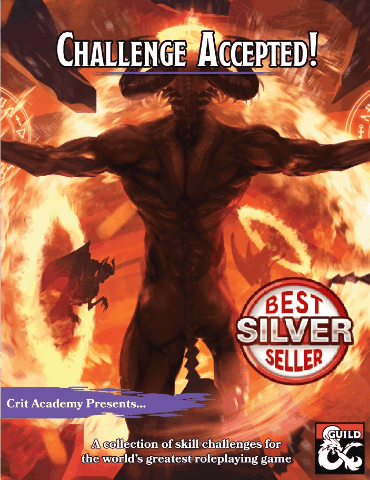Dungeons and Dragons: How I Make D&D Games Awesome for My Players with Story Branching
- Justin Handlin

- Nov 18, 2021
- 5 min read

Satisfying Dungeons and Dragons stories differ from other narrative forms in one major way: D&D stories don’t follow a single predetermined storyline through a series of turning points. Instead, each turning point presents the opportunity for the story to branch in an unexpected direction. By anticipating branches, you can ensure that the story keeps moving in an exciting and unexpected direction.
A strong branch point engages players and can move the story in two or more directions. Let's discuss in detail leveraging dice rolls to create story branches that enhance the game regardless of success or failure of the roll.
When you call for a check you determine an action that affects the story. Creating a pass/fail branching point.
A successful check lets the PC’s pass the test and gain a benefit. Often releasing any tension. This carries them to the next turning point.
When they fail a check or flee they fail the encounter and should suffer any negative consequences.
This should increase tension in some way, not just "you fail".
This should still carry them to the next turning point, even one not of their choosing but a result of the roll
Example: A rogue picking a lock and fails his check. Do you continue to ask for checks until he succeeds?
No! Instead push the story forward. The check represents the PC’s ability to deal with that particular lock.
Maybe something breaks, is damaged, or they just lack the skill to pick the lock. Alternatively, the time spent on trying to pick it consumes time, leading to a guard wandering around the corner and now they have a combat encounter. The guard has a key, so they can get past the locked door. Allowing the story to move forward, regardless of the failure.
A branch that has a null result and doesn’t move the story forward, can cause players frustration and honestly is just boring.
If players are unable to overcome a roadblock, there should always be another branch for them to take. That is the core of story branching.
Create strong pass/fail branch points and build up that tension
Example crossing a chasm on a tight rope. Let them know the dangers of failure. Fail...and you turn into a pile splattering goo.
A golden statue is on the other side of a room full of tripwires that run into dozens of small holes that fill the walls to temp them and reward their success. A couple of skeletons dead on the floor from the previous visitors clearly eludes to danger.
Avoid Dead Branches
When looking at the outcome of two branch points, don’t let either lead to a narrative dead end. This occurs most often when PCs can’t devise a solution to a problem, or with very frequent and petty obstacles are in their path with no real consequence of failure. Neither of these is fun or engaging for the PCs.
If you are unable to devise a consequence of failure that can take the story anywhere, it’s ok to allow the players an automatic success
Sometimes the players get lucky and the guards are asleep at their post.
Maybe the bandits they stumble upon just robbed a wagon full of ale and are in a drunken stupor.
Turn all dead branches into a scene that moves the story forward!
Sign Up for our newsletter to get a FREE copy of our best-selling D&D Supplement: Challenge Accepted. You will also be entered to win our weekly RPG PhatLoot Giveaways!
Make sure to subscribe to our newsletter so we can help you on your future adventures. Newsletter subscribers are also entered to win cool prizes each and every week. Check out our fellowship members for more great content. Visit our Youtube channel for our show episodes, actual play episodes, and our tips & tricks videos. Support us on Patreon to get weekly Dungeons and Dragons loot!
Branch Encounters
The aftermath of most encounters has two or more branches. Lucky and smart players can often walk away from an encounter without expending too many resources. Bad luck or poor tactics, in the same way, can leave the PCs in worse shape and force them to rest to replenish their resources or worse one or more players die during the encounter exacting a much higher cost and loss of time. You can turn these encounters into genuine pass/fail turning points with possible branches for both outcomes.
Let's take building a much more difficult encounter against superior opponents as an example.
Success leads to branch C that leads to their goal. Failure leads to branch B that they must succeed through before they reach desired branch C. Both get you there, but a group luckier or playing smarter will get there sooner. Additionally, you can have a secondary goal, if achieved in a certain number of rounds the encounter takes a positive turn.
Success, taking out the dashing kobold before the rest prevents reinforcements.
Failure, reinforcements show up making the encounter much more deadly.
Make sure to tailor the branches to each encounter adjusting difficulty if necessary.
Branching Decisions
Players often make unexpected choices, no matter how much you plan. This is something we as DMs always have to contend with. When this happens, it creates the perfect opportunity to create branches.
Great adventures provide players with a multitude of opportunities to make decisions that generate branch points for the story. Use this to decide the results that best fit the story and can drive the characters towards a goal.
It's important to remember that not all branching is combat-related. Normal interactions also cause branching. For example, which door to go through, choosing an NPC to talk to, choosing to speak with a guard for information instead of a local information broker. Often a DM who prefers to have completely fleshed out stories and encounters will often try to nullify a players’ choice and encourage them to return to their script. Try to avoid this at all costs. Stealing agency is certainly not something we want to do. A DM who can improvise might often let that players’ choice become an opportunity to take the story in a new direction. This can have amazing and fun results.
Remember, strong decision branches give the players a sense of freedom and influence over events. When a decision branch lies between action and inaction, heighten the stakes by making both options seem appealing in different ways. For example, let's look at a simple T-shaped intersection in a dungeon corridor. To the left, it smells of rotting flesh and necrotic magic, while the corridor on the left may have an echo of a sweet and alluring harpy’s song.
When it comes down to it. Make sure that all the decisions, no matter how small, have a meaningful impact on the story. The characters have agency, and what better way to show it than by creating a branching story based on their choice.
Thank you for reading our blog. If you enjoy the content and want to support us, visit our store or follow us on social media, join us on discord, youtube, and leave us a review.
Keep your blades sharp and spells prepared heroes!
*Crit Academy is an Affiliate of Amazon, DMsguild and DriveThruRPG*
















Comments